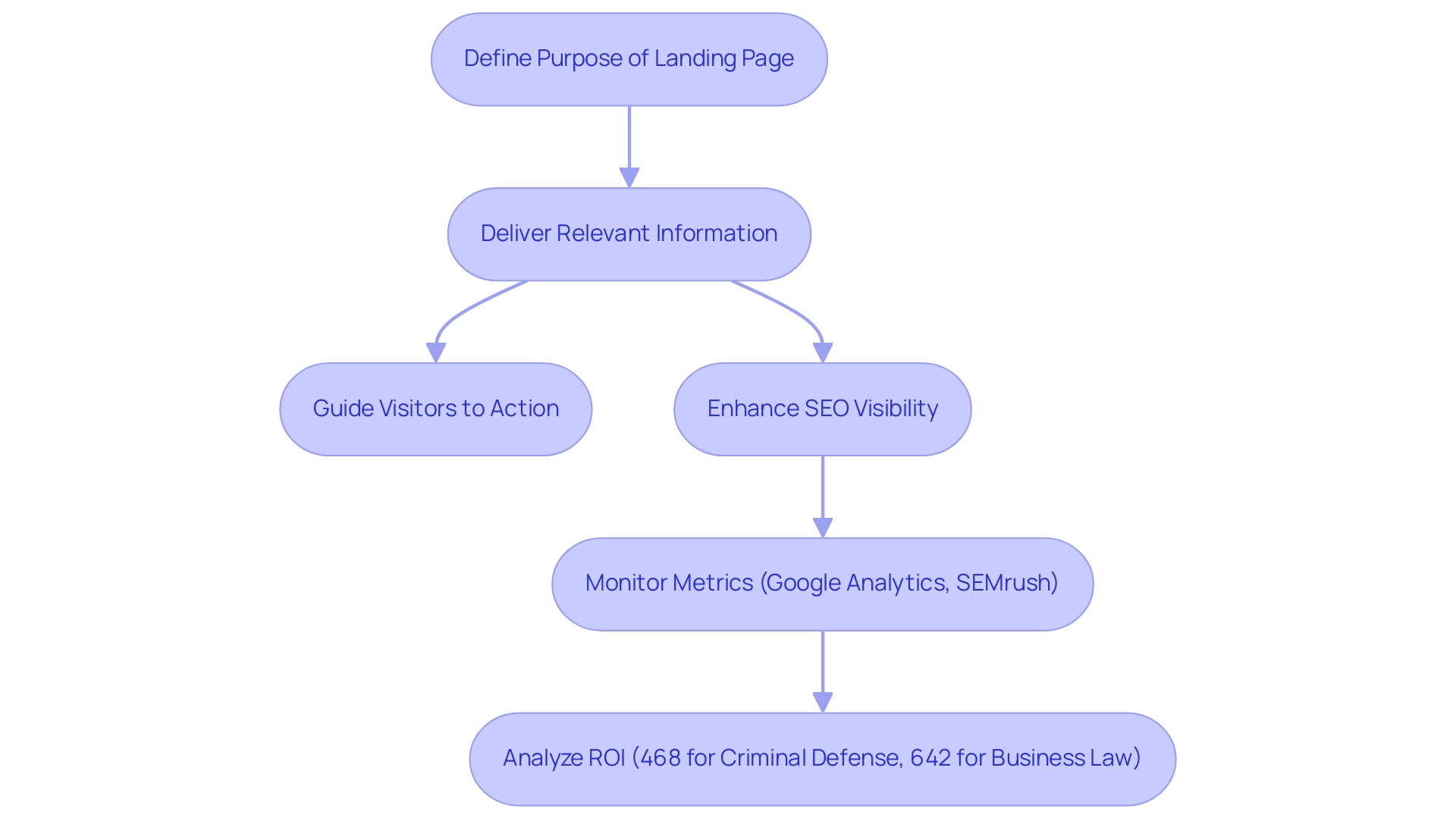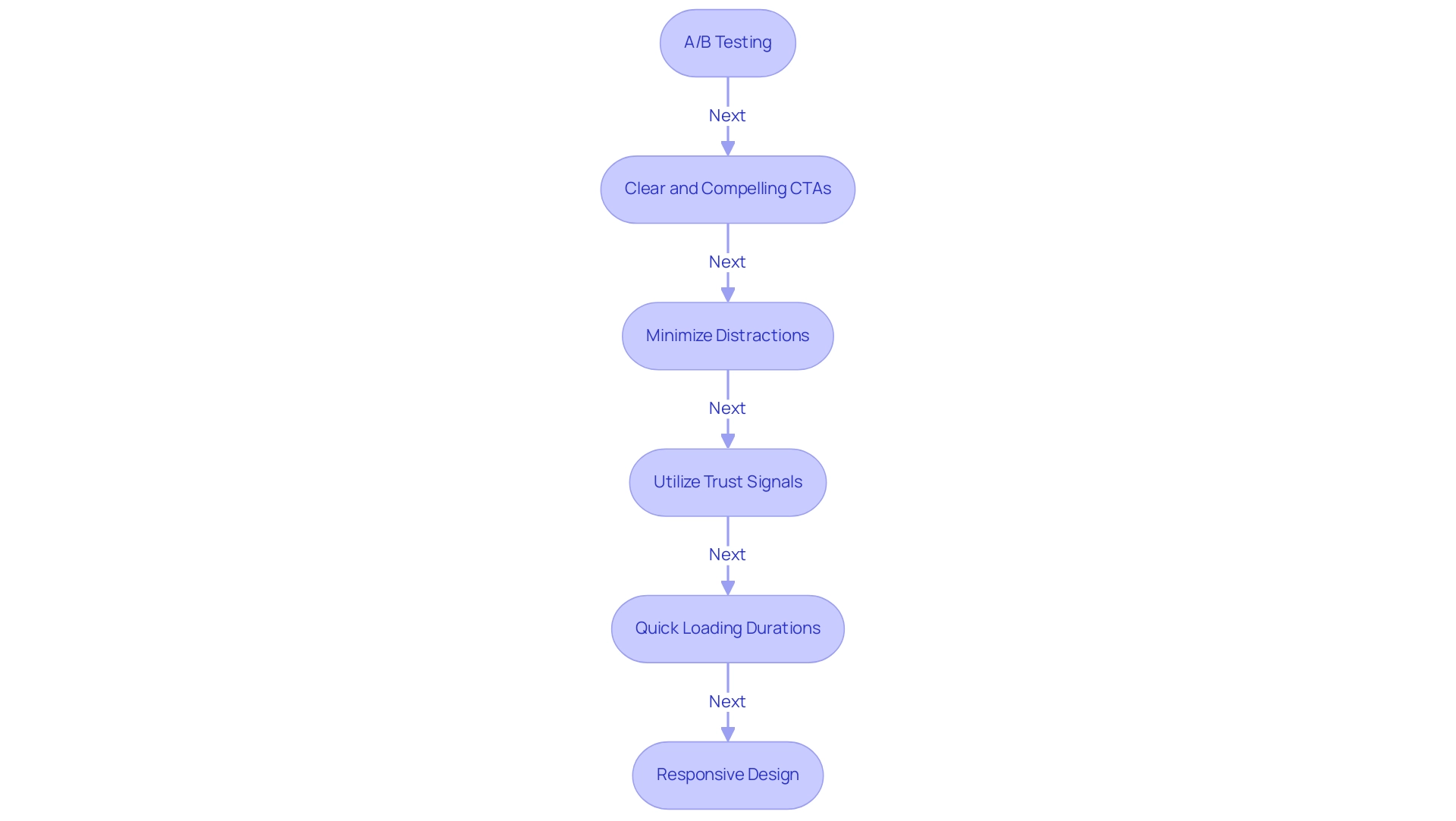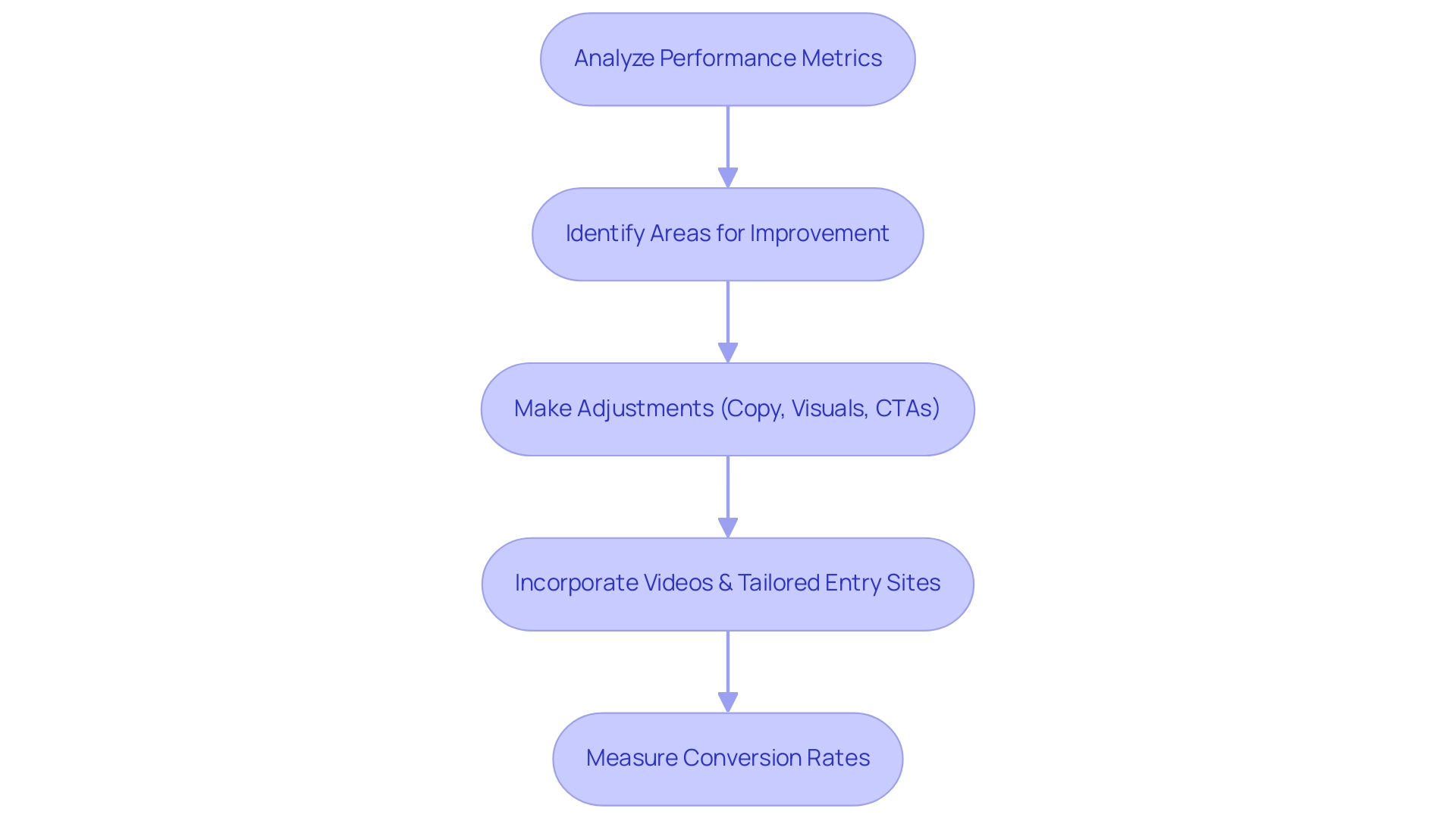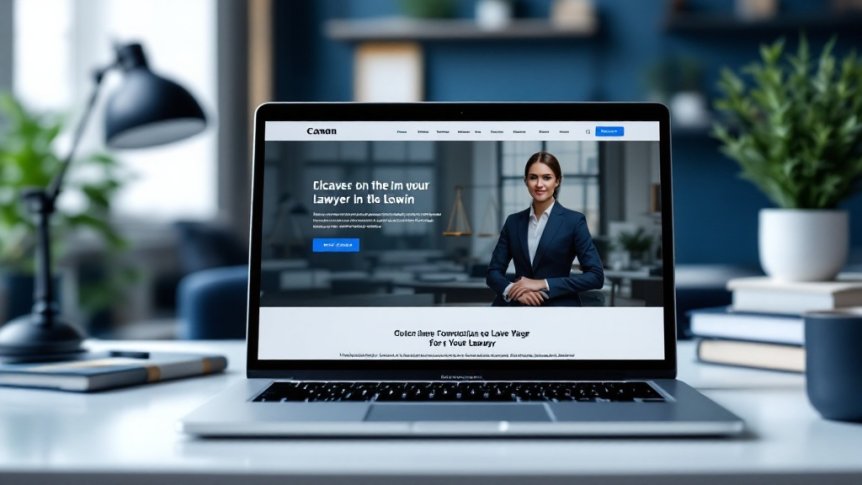Introduction
In the competitive landscape of legal services, the importance of a well-crafted lawyer landing page cannot be overstated. These specialized web pages are designed not only to inform potential clients about legal offerings but also to drive them toward taking decisive actions, such as contacting a lawyer or scheduling a consultation.
With the right elements in place, landing pages can significantly enhance visibility, engagement, and conversion rates, making them a critical component of any law firm’s marketing strategy.
As the digital realm continues to evolve, understanding the key components and optimization strategies for these pages will empower firms to effectively capture leads and maximize their marketing investments.
This article delves into the purpose, structure, and best practices of lawyer landing pages, providing insights that can help legal professionals navigate the complexities of online client acquisition.
Defining the Lawyer Landing Page: Purpose and Importance
A landing page for lawyers serves as a specialized web platform designed to convert visitors into leads or customers. Its fundamental objective is to deliver pertinent information about legal services while guiding potential individuals towards a specific action, such as initiating contact with the lawyer or scheduling a consultation. These documents hold significant importance in legal marketing as they enhance visibility in search engines, facilitate user engagement, and ultimately contribute to elevated conversion rates.
By focusing on a specific service or objective, legal professional websites effectively convey value propositions and directly meet the requirements of potential customers. Recent research suggests that websites with informative and high-quality material possess 434% more indexed entries, emphasizing the essential role of content in drawing potential customers. Moreover, industry insights from Albert Badalyan highlight that
Grasping essential statistics of your web pages can aid in enhancing their performance in 2025 and attract more leads to your business.
This strengthens the importance for law firms to invest in a landing page for lawyers to enhance their marketing efficiency and boost interaction with potential customers. Furthermore, using software to monitor marketing metrics, like Google Analytics and SEMrush, can offer law firms valuable insights into the effectiveness of their web destinations and overall marketing strategies. Moreover, having a dedicated staff member or virtual receptionist to answer calls can significantly enhance customer engagement, ensuring that potential leads are addressed promptly.
In 2024, law firms spent an average of $120,000 annually on SEO, with substantial returns on investment reported, including a 468% ROI for criminal defense firms and a 642% ROI for business law practices over three years. This highlights the financial advantages of investing in enhanced web destinations as part of a wider legal marketing approach.

Key Components of an Effective Lawyer Landing Page
An effective lawyer landing page is constructed on several essential components that collaborate to attract and engage potential customers:
- Compelling Headline: A powerful headline that captures attention and clearly articulates the services offered is crucial. This initial hook sets the tone for the visitor’s experience.
- The copy should be succinct yet informative for the landing page for lawyers, addressing potential customer pain points and clearly delineating the benefits of the services provided.
- Strong Call to Action (CTA): A well-placed CTA is vital; it guides visitors towards taking a specific action, whether it’s filling out a contact form or making a phone call to the office.
- Visual Elements: Incorporating high-quality images or videos that resonate with the target audience can significantly enhance engagement and retention.
- Testimonials or Case Studies: Featuring testimonials or case studies builds trust and credibility, showcasing past successes that can reassure potential clients about their choice.
- Contact Information: Contact details must be easily accessible to facilitate immediate communication, ensuring that interested visitors can reach out without delay.
- Mobile Optimization: Given that many users search for legal services on mobile devices, ensuring the landing page for lawyers is mobile-optimized is critical for user experience.
Statistics indicate that lengthy web forms can produce up to 220% more leads than their shorter equivalents, highlighting the significance of offering detailed information to draw serious inquiries. This case study demonstrates that marketers are increasingly concentrating on detailed web entries to enhance lead generation. In light of the average form completion rate across all industries being only 4.2%, optimizing these components is essential for improving conversion rates. Priyanka Arora observed that a good benchmark for average duration on site is about 30 seconds across various sectors, emphasizing the necessity for entry points to load swiftly and engage audience attention effectively. This urgency is further underscored by the fact that human attention spans are very short, making quick loading times a critical factor for success.

Use Cases: How Lawyer Landing Pages Drive Business
Lawyer landing sites fulfill several critical functions that are essential for effective online advertising strategies:
- Lead Generation: These sections are designed to collect potential customers’ information through strategically placed forms. Given that 70% of law firm leads are lost due to inadequate follow-up, implementing a robust lead management system is vital for timely responses and business growth. This system not only enhances customer service but also boosts conversion rates, ensuring that no potential customer slips through the cracks.
- Service Promotion: A landing page for lawyers emphasizes particular legal services, such as personal injury or family law, enabling firms to directly reach individuals seeking those services. This focus is crucial, especially considering that 95% of legal consumers read online reviews before hiring an attorney. Therefore, creating a strong first impression on the landing page for lawyers is paramount.
- Event Registration: These sections simplify the process for potential clients to sign up for webinars or legal workshops, effectively educating them about legal matters and establishing the firm’s authority in the field.
- Content Marketing: By offering downloadable resources—such as eBooks or guides—in exchange for contact details, law firms can provide value while simultaneously building their email lists. Segmentation of these audiences for tailored email campaigns significantly enhances engagement and conversion rates. Significantly, websites with informative and high-quality content receive 434% more indexed entries, highlighting the importance of content quality in attracting potential clients.
- Campaign-Specific Goals: A landing page for lawyers supports targeted advertising campaigns by ensuring the content aligns seamlessly with the ad messaging. This strategic alignment not only enhances conversion metrics but also strengthens the firm’s promotional efforts.
In 2024, the efficacy of web pages in the legal sector will be emphasized by their capability to generate leads, advertise services, and bolster comprehensive marketing strategies.

Optimizing for Conversions: Strategies for Success
To efficiently enhance attorney web pages for increased conversion levels, the following strategies should be applied:
- A/B Testing: Engage in systematic experimentation by varying elements such as headlines, calls to action (CTAs), and layouts. This process helps identify which configurations resonate most with visitors, leading to improved performance. As Waseem Bashir, CEO, states,
By looking at how users respond, it helps you [make your landing page work better](https://apexure.com/blog/landing-page-ab-testing-framework-to-maximize-conversions). This approach aligns with the case study titled ‘Increasing Conversion Rates with Effective Landing Page for Lawyers,’ which demonstrates how A/B testing can lead to faster loading times and clearer CTAs, ultimately boosting conversion rates. - Clear and Compelling CTAs: Use action-oriented language that creates a sense of urgency in potential customers, directing them toward immediate engagement with your services.
- Minimize Distractions: Streamline navigation options to maintain visitor focus on the primary desired action, thus enhancing the likelihood of conversion.
- Utilize Trust Signals: Incorporate elements such as badges, professional certifications, or positive customer testimonials to establish credibility and instill confidence in potential customers. For example, showcasing testimonials from satisfied clients can significantly enhance perceived trustworthiness.
- Quick Loading Durations: Ensure that entry screens load swiftly, as research indicates that faster load times significantly diminish bounce occurrences and enhance user interaction.
- Responsive Design: Enhance entry screens for different devices, delivering a smooth user experience across desktops, tablets, and smartphones.
Applying these strategies not only improves the efficiency of a landing page for lawyers but also corresponds with research indicating that A/B testing can increase conversion percentages from 4.33% to 6.09%. This highlights the essential function of A/B testing in digital marketing for law firms, ultimately resulting in an enhanced landing page for lawyers that boosts customer engagement and conversion levels.

The Importance of Testing and Refinement in Landing Page Success
The success of attorney websites depends on thorough testing and improvement. Regular analysis of performance metrics, including conversion rates and bounce rates, is essential for legal marketers to uncover areas necessitating improvement. By leveraging advanced tools such as Google Analytics, practitioners can gain valuable insights into user behavior, which facilitates data-driven decision-making.
Adjustments guided by this data—whether it involves fine-tuning the copy, redesigning visual elements, or altering calls-to-action—are crucial for maintaining the effectiveness of websites in converting visitors into clients. Continuous improvement not only enhances user experience but also optimizes marketing investment returns. As Khyati Hooda, an SEO expert, observes,
Incorporating videos on web pages can enhance conversions by 86% because 90% of consumers favor video content.
This insight emphasizes the potential for targeted improvements to significantly increase conversion levels. Considering that entry sites produce a signup rate of 23%, in contrast to 66% for popups, investing in tailored entry sites—which can range from $500 to $3,000—becomes a strategic choice for enhancing client acquisition efforts. Furthermore, the deployment of tailored entry sites for Docket led to an impressive 68% rise in conversions, highlighting the concrete advantages of this method.
Understanding different heuristics and mental models in testing landing pages for lawyers is also crucial, as it allows legal marketers to tailor their strategies effectively to meet user expectations.

Conclusion
Creating an effective lawyer landing page is essential in today’s competitive legal landscape. These pages serve as powerful tools for converting visitors into clients by clearly presenting legal services and guiding potential clients toward meaningful actions. Key components such as:
- Compelling headlines
- Concise copy
- Strong calls to action
- Mobile optimization
work together to enhance user engagement and drive conversions.
The strategic use of lawyer landing pages not only promotes specific legal services but also facilitates lead generation and content marketing efforts. By capturing potential clients’ information and providing valuable resources, law firms can build trust and nurture leads effectively. Furthermore, implementing optimization strategies, including:
- A/B testing
- Performance analysis
ensures that landing pages remain effective in achieving their goals.
In summary, investing in well-structured and optimized landing pages is crucial for law firms aiming to maximize their marketing efforts and improve client acquisition. As the digital landscape continues to evolve, maintaining a focus on these critical elements will empower legal professionals to better connect with potential clients and ultimately drive business growth.

